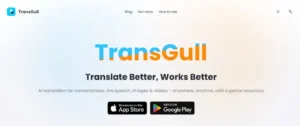Language barriers can be frustrating. Whether it’s trying to speak to someone while traveling abroad, collaborating with a colleague from another country, or even having a conversation with a friend who speaks a different language, misunderstandings can quickly arise. These communication breakdowns not only affect personal relationships but can also create obstacles in business, education, and even healthcare. However, in today’s digital age, there are numerous practical tools and strategies that can help break down these barriers and foster smoother communication. Let’s dive into some of these tools and see how they can change the way we communicate across languages.
Technology at Your Service: Tools to Break the Language Barrier
In our tech-driven world, solutions to language barriers are more accessible than ever. From smartphone apps to AI-powered software, technology can now translate, interpret, and even help us adjust how we speak to make conversations easier.
One such tool is accent reduction software. For many people, especially those who speak English as a second language, heavy accents can sometimes lead to communication challenges. While accents are part of one’s identity, there are times when modifying your accent slightly can help others understand you more easily, especially in professional or academic environments. Accent reduction software works by helping users practice their pronunciation and make subtle adjustments to ensure they are more easily understood. This can be especially useful in settings where clarity is essential, such as customer service, teaching, or public speaking.
Accent reduction is about enhancing communication, not erasing cultural identity. It’s a practical tool that serves to bridge the gap between different accents, making it easier for everyone to connect. Combined with other translation tools, accent reduction can make a world of difference when navigating a multi-lingual environment.
Language Translation Apps: A Handy Helper
Perhaps the most obvious and popular tool for breaking down language barriers are language translation apps. These apps, such as Google Translate, iTranslate, and Duolingo, have made it possible for anyone to instantly translate text, speech, and even images. These apps use sophisticated algorithms and databases of linguistic patterns to provide real-time translations, making it easy to understand conversations, read menus, or follow instructions in a foreign language.
What makes translation apps so accessible is their simplicity and versatility. Whether you’re traveling in a foreign country or trying to communicate with someone who speaks a different language, these apps are easy to download and use. Many apps also include offline capabilities, allowing users to translate text even when they don’t have access to the internet. The convenience of carrying around a mini-translator in your pocket makes breaking down language barriers feel less daunting and more manageable.
Additionally, these apps have improved dramatically over the years, with translations becoming more accurate and nuanced. For example, Google Translate now supports voice input and can translate in real-time through conversations, a feature that can be invaluable in both personal and professional settings.
Speech-to-Text Technology: Bridging the Gap
For those who are hearing impaired or need to transcribe conversations in real-time, speech-to-text technology is another powerful tool for breaking down language barriers. Speech-to-text software converts spoken language into written text, making it easier for individuals to follow conversations in real-time. Some tools even have multi-language support, allowing the transcription to happen in several languages at once.
One of the most notable advantages of speech-to-text technology is its speed and accuracy. This tool is incredibly useful for meetings, lectures, or any situation where information needs to be shared quickly and clearly. It ensures that nothing is lost in translation and can even be used to generate subtitles for videos or live presentations. As we continue to embrace a globalized society, speech-to-text technology can make sure everyone has equal access to information, regardless of the language they speak.
Video Conferencing with Real-Time Translation
In our increasingly globalized world, many businesses and teams work with colleagues from different countries. However, coordinating across time zones and languages can be tricky. Enter video conferencing tools with real-time translation features. Platforms like Zoom and Microsoft Teams have begun to incorporate live translations of both speech and text, making international meetings much easier to navigate.
These tools allow participants who speak different languages to attend the same meeting and follow along without the need for human interpreters. Real-time translation not only makes communication more efficient but also enhances the collaboration process. When people feel understood and included, they’re more likely to contribute to discussions, leading to better outcomes for everyone involved.
Additionally, these tools often come with options for transcription, which helps individuals who need to review or reference the meeting later. For global teams working on tight deadlines or facing time zone challenges, these video conferencing solutions are crucial for seamless communication.
Understanding Cultural Nuances
While technology is undeniably useful for breaking down language barriers, it’s important to also consider the cultural context in communication. Language isn’t just about words; it’s about how we convey meaning, emotion, and intention. Even if we can communicate in the same language, cultural differences can still create misunderstandings.
This is where having an awareness of cultural nuances comes into play. For instance, certain phrases or expressions might have different meanings in various cultures, even if they’re technically the same words. In some cultures, indirect communication is preferred, while in others, directness is seen as a sign of honesty and efficiency.
When trying to break down language barriers, it’s important to remember that technology alone may not always bridge the gap in terms of cultural understanding. Tools like translation apps or real-time speech translators might get the words right, but they might not always capture the cultural subtleties behind those words. This is why understanding cultural differences is just as important as learning the language itself.
The Power of Active Listening
One of the simplest yet most effective tools for breaking through language barriers is active listening. Even when we don’t speak the same language, paying close attention to the other person’s tone, body language, and facial expressions can help us understand the message being conveyed. This is particularly true when verbal communication might be limited.
Active listening encourages us to focus not only on the words being said but also on the non-verbal cues that provide additional context. It’s about being present in the conversation and making an effort to truly understand the other person. This approach fosters empathy and connection, which are crucial when communicating across language barriers.
Conclusion: Bridging Gaps, Building Connections
Breaking through language barriers is no longer as difficult as it once was. With the help of tools like translation apps, speech-to-text technology, video conferencing platforms with real-time translation, and even accent reduction software, we can communicate more effectively across languages and cultures. These tools are making it easier than ever to connect, collaborate, and understand one another, regardless of where we come from or what language we speak.
At the same time, it’s important to recognize that technology is only part of the equation. To truly break through language barriers, we must also embrace active listening and cultural awareness. By combining these practical tools with a commitment to understanding one another, we can create a more inclusive and connected world. The power of communication is limitless when we have the right tools to overcome the challenges that language presents.
For more information, click here.









